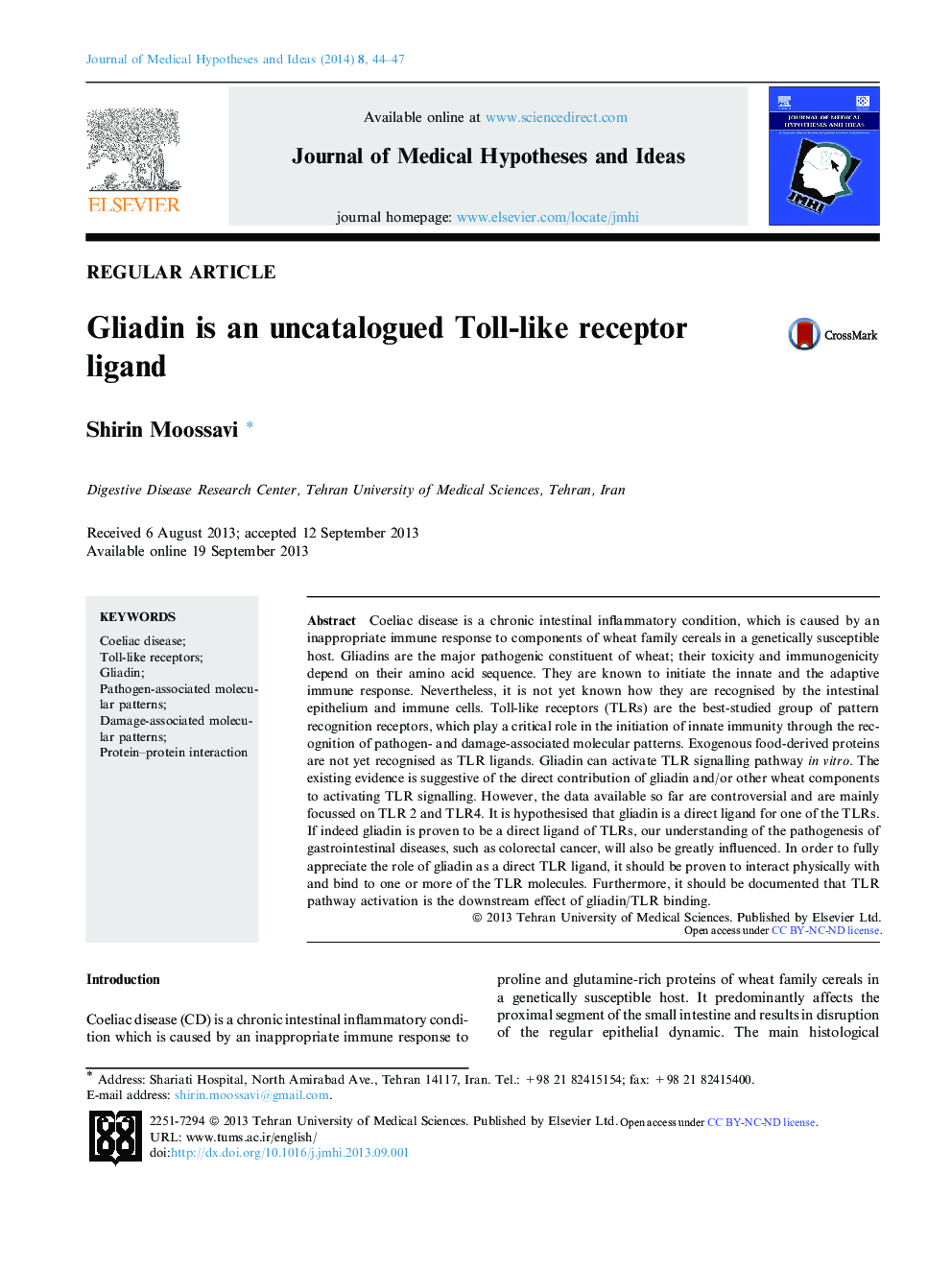| Article ID | Journal | Published Year | Pages | File Type |
|---|---|---|---|---|
| 3482985 | Journal of Medical Hypotheses and Ideas | 2014 | 4 Pages |
•Coeliac disease is caused by an immune response to the wheat family in a susceptible host.•Gliadins are the major pathogenic constituent of wheat.•Gliadins are known to initiate the innate and the adaptive immune response.•Toll-like receptors (TLRs) detect conserved structural motifs of micro-organisms and endogenous proteins.•TLR7 and TLR8 single-nucleotide polymorphism is associated with coeliac disease.•Gliadin can activate the TLR signalling pathway in vitro.
Coeliac disease is a chronic intestinal inflammatory condition, which is caused by an inappropriate immune response to components of wheat family cereals in a genetically susceptible host. Gliadins are the major pathogenic constituent of wheat; their toxicity and immunogenicity depend on their amino acid sequence. They are known to initiate the innate and the adaptive immune response. Nevertheless, it is not yet known how they are recognised by the intestinal epithelium and immune cells. Toll-like receptors (TLRs) are the best-studied group of pattern recognition receptors, which play a critical role in the initiation of innate immunity through the recognition of pathogen- and damage-associated molecular patterns. Exogenous food-derived proteins are not yet recognised as TLR ligands. Gliadin can activate TLR signalling pathway in vitro. The existing evidence is suggestive of the direct contribution of gliadin and/or other wheat components to activating TLR signalling. However, the data available so far are controversial and are mainly focussed on TLR 2 and TLR4. It is hypothesised that gliadin is a direct ligand for one of the TLRs. If indeed gliadin is proven to be a direct ligand of TLRs, our understanding of the pathogenesis of gastrointestinal diseases, such as colorectal cancer, will also be greatly influenced. In order to fully appreciate the role of gliadin as a direct TLR ligand, it should be proven to interact physically with and bind to one or more of the TLR molecules. Furthermore, it should be documented that TLR pathway activation is the downstream effect of gliadin/TLR binding.
Graphical abstractFigure optionsDownload full-size imageDownload as PowerPoint slide
